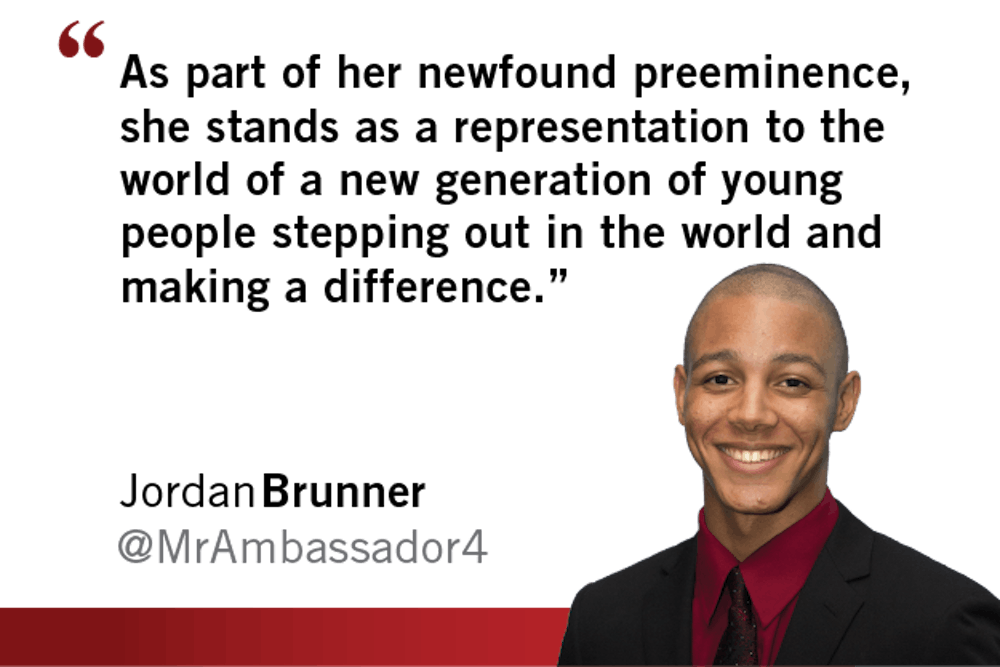I have often heard adults around me ask this question, “Why is youth wasted on the young?” They obviously haven’t met Malala Yousafzai. The 17-year old girls’ rights activist began crusading against oppression before she even reached her teens. Despite numerous death threats and a nearly-successful attempt on her life that left her hospitalized for months, Yousafzai has valiantly continued her fight for girls' right to go to school in countries like her native Pakistan.
Now she has achieved what is perhaps the apex of her recognition as a force for good in the world: Yousafzai won the Nobel Prize for Peace earlier this month, along with Kailash Satyarthi, another children’s rights activist. She is now the youngest Nobel Peace Prize winner. Her youth was made much more poignant by the fact that she was called out of chemistry class at Edgbaston High School for Girls to hear the news that she had been awarded the prize.
Yousafzai follows in the footsteps of such titans as Nelson Mandela, Martin Luther King Jr., and Mother Teresa as both a Nobel Peace Prize winner and a tireless crusader for human rights and justice for all. But more importantly than who she follows is who she precedes. As part of her newfound preeminence, she stands as a representation to the world of a new generation of young people stepping out in the world and making a difference. Yousafzai embodies high school-aged students who are smart beyond belief and have world-changing dreams.
In fact, some are right here at ASU. Joey Hudy is one such young man; at the tender of 16, he is considered one of the 10 smartest kids in the world, and his scientific experiments have fascinated people as far up as the President of the U.S. He attends ASU’s Herberger Young Scholars Academy while simultaneously working at Intel.
Another young titan who has also been recognized by the President of the U.S. is Taylor Wilson. In 2009, he became the youngest person to make nuclear fission at 14 years old. A few years ago, he built his own nuclear reactor at 17. He is now working to start his own business which will sell products that ensure nuclear safety, benefiting the entire globe.
One other high school student with a world-changing dream is Marian Bechtel. Like Wilson, Bechtel is 19 years old with a mind for physics. She invented a mine sweeper inspired by her piano, and as a sophomore at Bryn Mawr College is still contributing to the wider world by studying structural geology and giving Ted Talks to raise awareness about the effects of land mines.
In naming Yousafzai as its youngest choice for the Peace Prize, the Nobel Prize Committee has given these and other young shakers and movers an international representative. Although the rest of the world may not know the Hudys, Wilsons and Bechtels of the world, they know Yousafzai. In its own way, the Committee has contributed to yet another barrier being broken for young people. Yousafzai, through the Committee’s actions, now shines as an inspiration to other high school students. It is just sad that some of her own people don’t feel the same pride as we do in her accomplishments.
In the process, the Committee has also bridged another gap: the cultural and political one that exists between Pakistanis and Indians. By giving the prize jointlyto Yousafzai and Satyarthi, the Committee has in effect tried to link the futures of India and Pakistan together, while also draw attention to the fight that both Yousafzai and Satyarthi are waging.
That kind of cultural and age-directed diversity is why Alfred Nobel, who founded the Nobel Prize in its many forms, would be proud of his Committee. Even so, Nobel’s admiration is not worth anything if we do not continue to honor his memory. Yousafzai should not be the last young person to win a Nobel Prize, nor do I think she will be. Every young person should learn from her example and continue her work, as Barack and Michelle Obama point out, starting with ASU. We started our contribution with Joey Hudy; let’s make it bigger.
Reach the columnist at jbrunne2@asu.edu or follow him on Twitter @MrAmbassador4
Editor’s note: The opinions presented in this column are the author’s and do not imply any endorsement from The State Press or its editors.
Want to join the conversation? Send an email to opiniondesk.statepress@gmail.com. Keep letters under 300 words and be sure to include your university affiliation. Anonymity will not be granted.
Like The State Press on Facebook and follow @statepress on Twitter.





